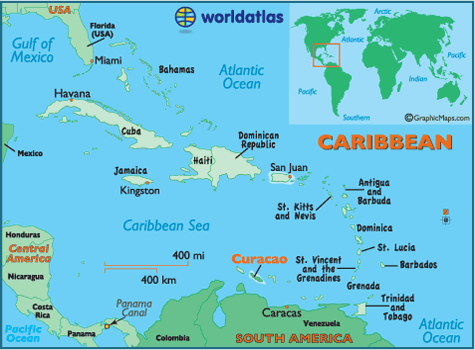
TREATY Of UTRECHT Of 1713
As reported in the Curacao Chronicle, "The Treaty of Utrecht of 1713, Set Curacao Free Of The Transatlantic Slave Trade," by Jacob Gelt Dekker, on 18 March 2013 -- Exactly 300 years ago, in May and April, 1713, The West Indisch Company— WIC— of Curacao and Amsterdam lost its asiento right. Thereafter, the asiento right— the right to sell slaves to Spanish colonies in South America— was granted exclusively to England. This was part of a settlement of lengthy Spanish succession wars and the Queen Ann wars. Spain, France, Great Britain, the Republic of the Seven United Netherlands, The Duke of Savoy, and the King of Portugal were all party to the Treaty.
Curacao became the trading hub for the family Coymans when they bought the asiento from Spain in 1665 for the astronomical amount of 200,000 ducats. The Coymans trading house engaged the WIC in the deal. Unfortunately this merger caused the WIC to file for bankruptcy in -1672-1674.

The next WIC was founded in 1675, but it took till 1685 before a next generation Coymans secured a new asiento contract. But in 1713 it was all over. The slave selling business became a local trade and in 1730 the WIC even lost its local monopoly right on the island.
Official records show that the WIC transported between 1675 and 1734 in total, 170,016 slaves. The new WIC had to file for bankruptcy and be liquidated in 1792 due to poor business. Only during the short period of 58 years and with several interruptions, Curacao functioned as a hub in the transatlantic slave trade.

Unfortunately, many politicians and revisionists today, show very little or no respect for historical facts and blatantly claim involvement for hundreds of years. Myths were created around the Dutch slave trade as a highly profitable trade that financed the Golden Age, in spite of the multiple bankruptcies of the trading companies.
The Dutch Golden Age lasted in fact far less than a hundred years. The Disaster Year of 1672 definitely ended the Dutch Golden Age, after a slow start in 1628, when the pirate Piet Hein hijacked a Spanish silver fleet in the Bay of Matanzas in Cuba.
The City and University of Utrecht in The Netherlands will celebrate the 300-year anniversary of the Treaty of Utrecht with many seminars, concerts, music festivals, historic reenactments and great pomp and circumstance. The Island of Curacao was officially invited to participate in the celebrations, since the Treaty made a definite and lasting end to Curacao’s role in the repugnant transatlantic slave trade.
Unfortunately the island rejected the invitation, since the events “were too obscure and unknown to the larger public.” With this little column, I hope to make a small difference. (source: Curacao Chronicle)


No comments:
Post a Comment